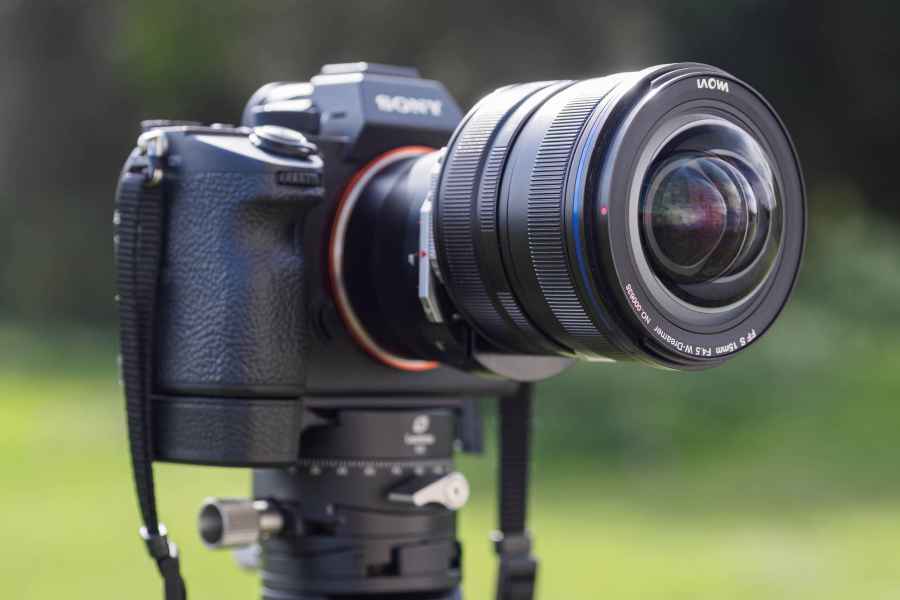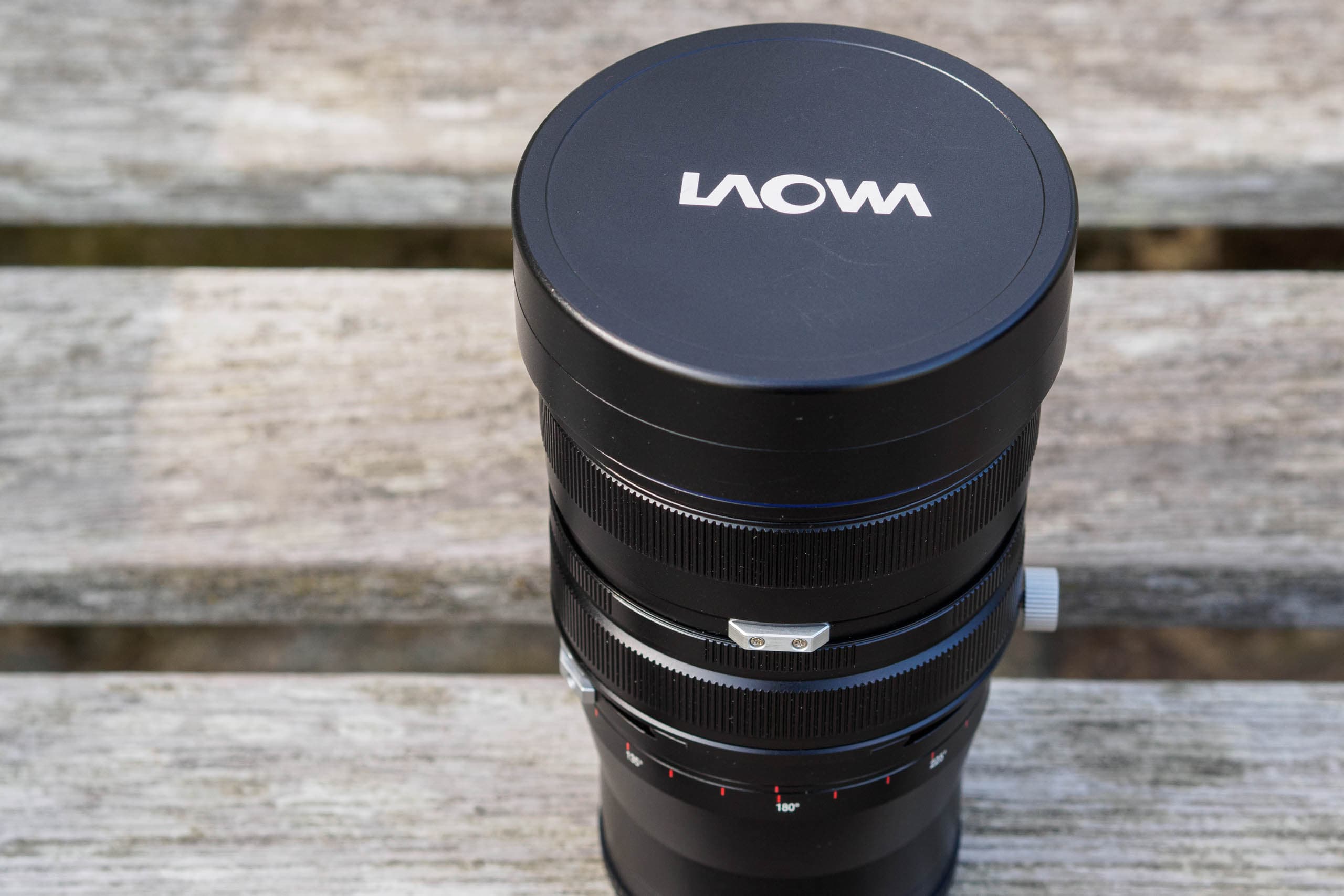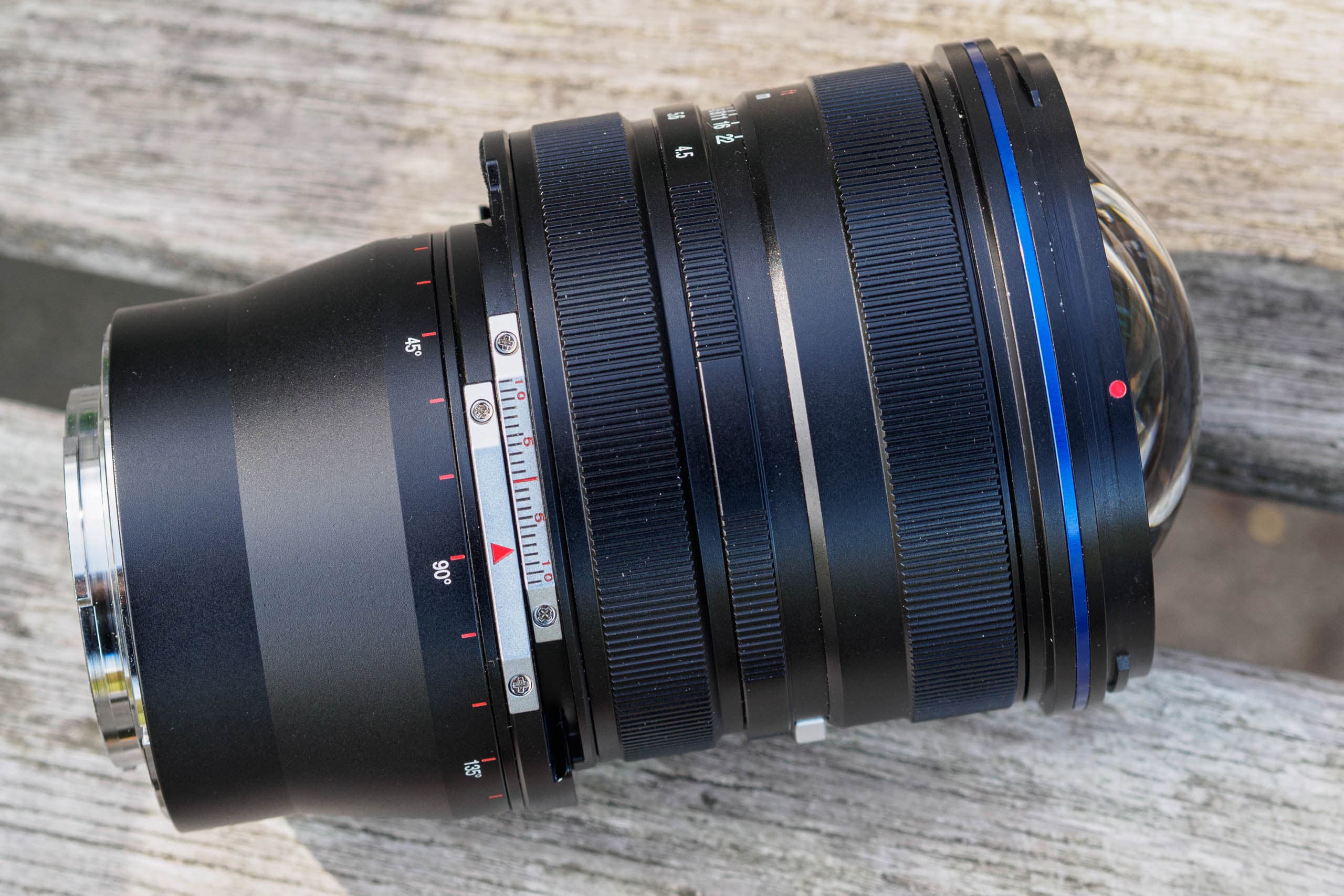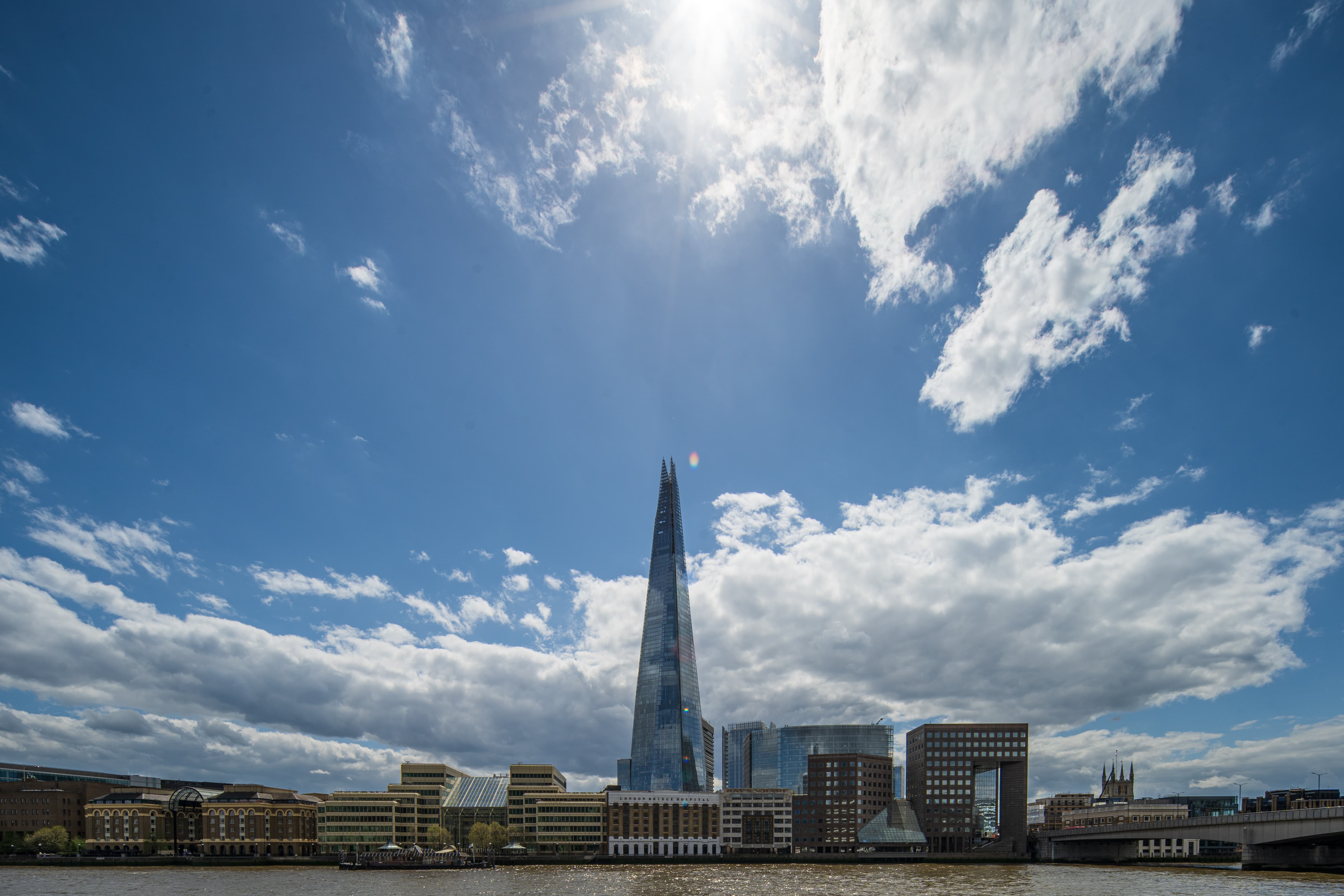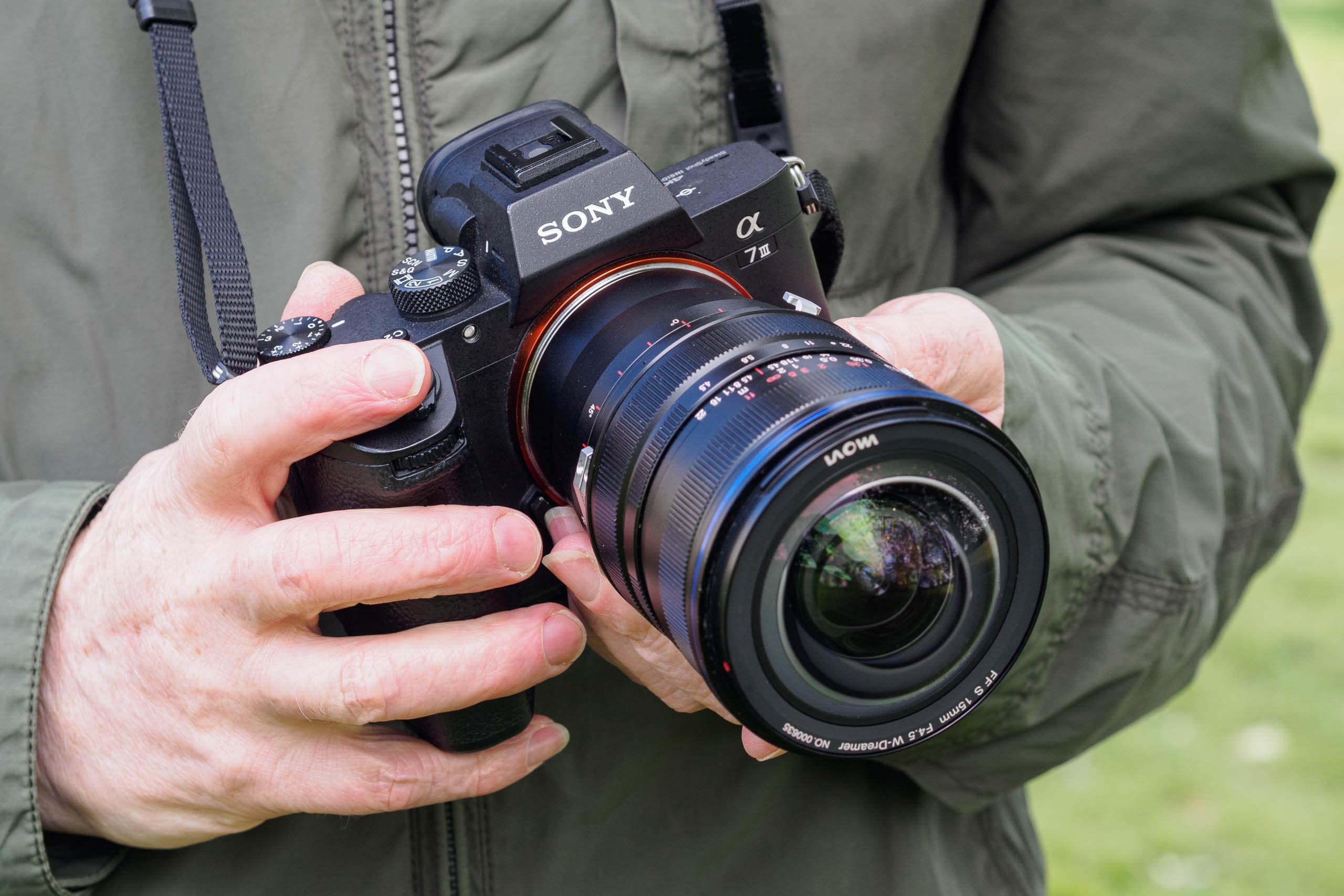Of all the specialist lens types available, perspective control optics are perhaps the rarest and least understood. Even their colloquial name, ‘tilt and shift’, is slightly misleading; these are two separate functions with different purposes, and lenses don’t necessarily need to provide both. Tilt allows manipulation of depth of field, while shift enables correction of keystone distortion. The latter is most commonly seen as converging verticals when shooting tall buildings, which means that wideangle shift lenses are particularly valuable for architectural work.

Wideangle shift lenses allow you to photograph large buildings at close quarters without converging verticals. Sony Alpha 7 III, 1/80sec at f/8, ISO 125
The lens we’re looking at here, the Laowa 15mm f/4.5 Zero-D Shift, has the distinction of being the world’s widest-angle shift lens. With a £1249 price tag, it’s very much a specialist optic, but compared to the £2259 Canon TS-E 17mm f/4L or the £3149 Nikon PC Nikkor 19mm f/4E ED, it looks like a bargain. Designed for use on full-frame DSLR and mirrorless cameras, it’s available in all of the relevant mounts (Canon EF, Canon RF, Leica L, Nikon F, Nikon Z, Pentax K, Sony E).
Why use a shift lens?
Let’s start off by getting one thing out of the way. Correcting converging verticals is now really easy in almost any image-editing software. So why on Earth would you spend over £1000 on a shift lens?
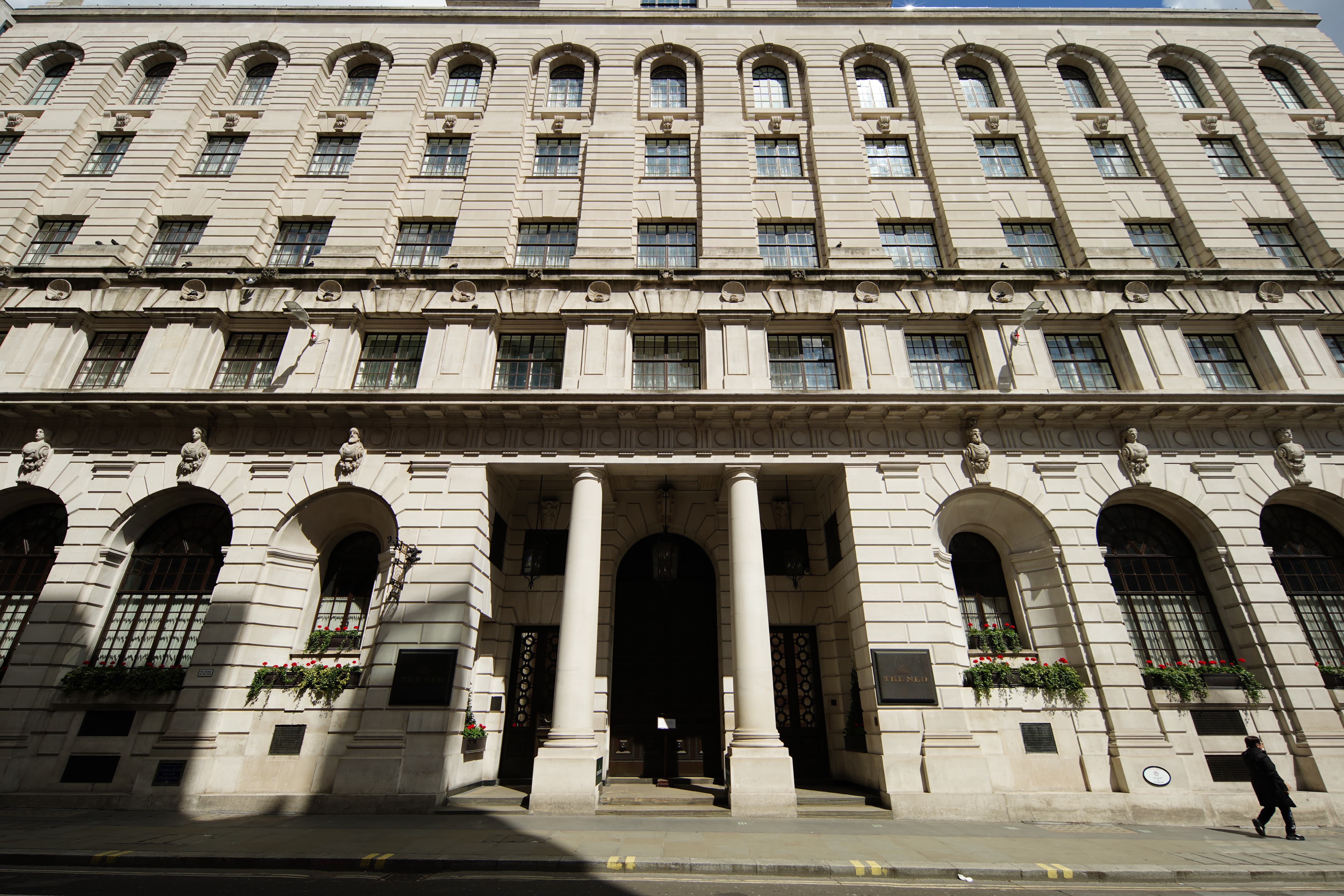
It’s easy to correct converging verticals like this in Photoshop, so why use a shift lens? Sony A7 III, Laowa 15mm f/4.5 Zero-D, 1/250sec at f/8, ISO 100.
Firstly, let’s think about resolution. When you correct convergence in software, you inevitably lose detail. The more extreme the corrections, the more you lose, and with a typical 24MP camera you’ll quickly find yourself with files that are 12MP or even smaller.

The same image, corrected and cropped to 3:2, ends up with less than 8MP resolution
A second reason lies with composition. Tilt the camera up to take in a tall building, and your view of the world gets hugely distorted, meaning it’s pretty much impossible to visualise your final image.
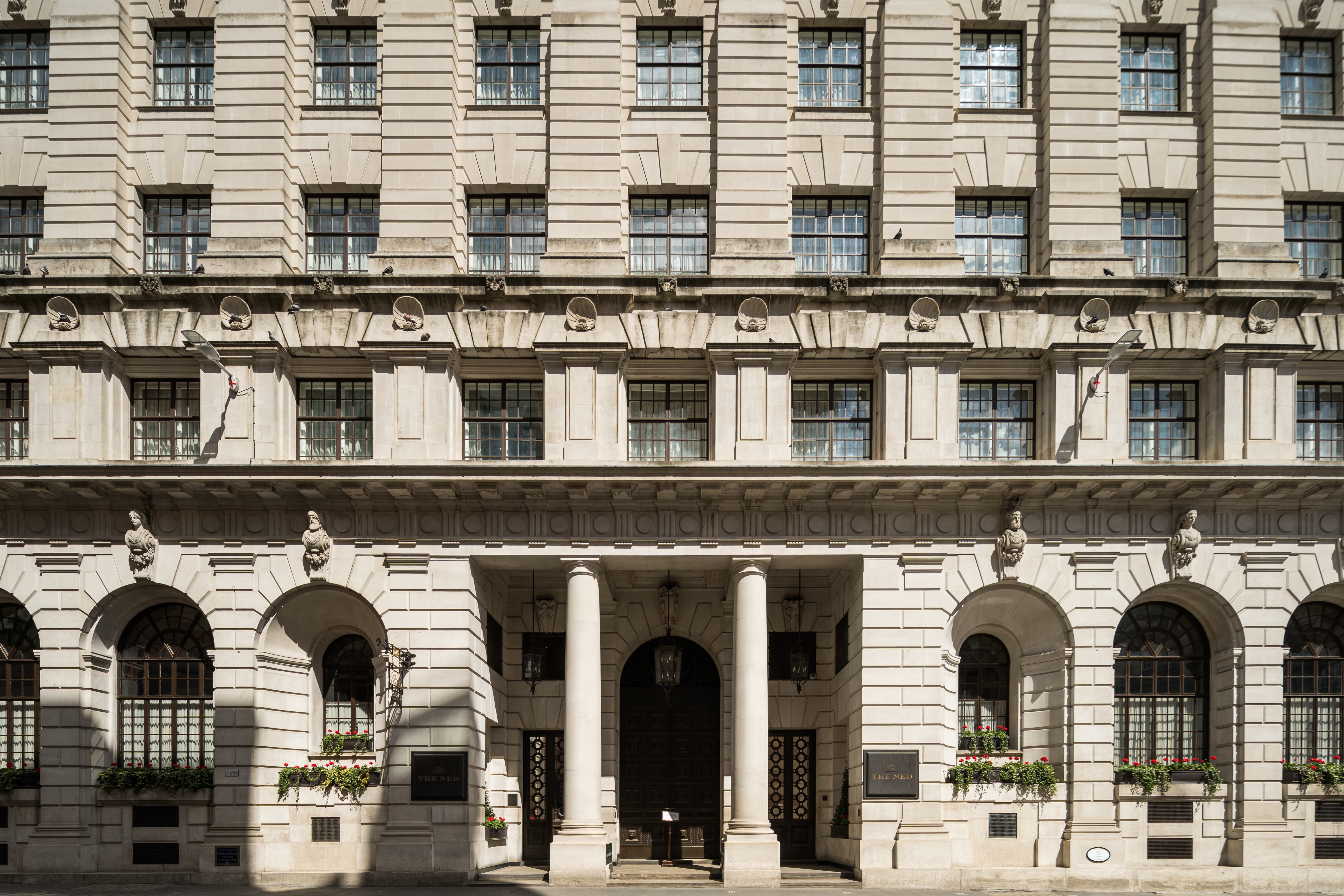
This shot was taken from the same position, but with the lens shifted upwards. Sony A7 III, Laowa 15mm f/4.5, 1/320sec at f/8, ISO 100
This effect is compounded by the fact that when you apply perspective correction afterwards, you’ll almost invariably end up with less coverage of the foreground than you wanted. One way of addressing this is to use an even wider lens and then crop, but this brings a further penalty in terms of resolution.
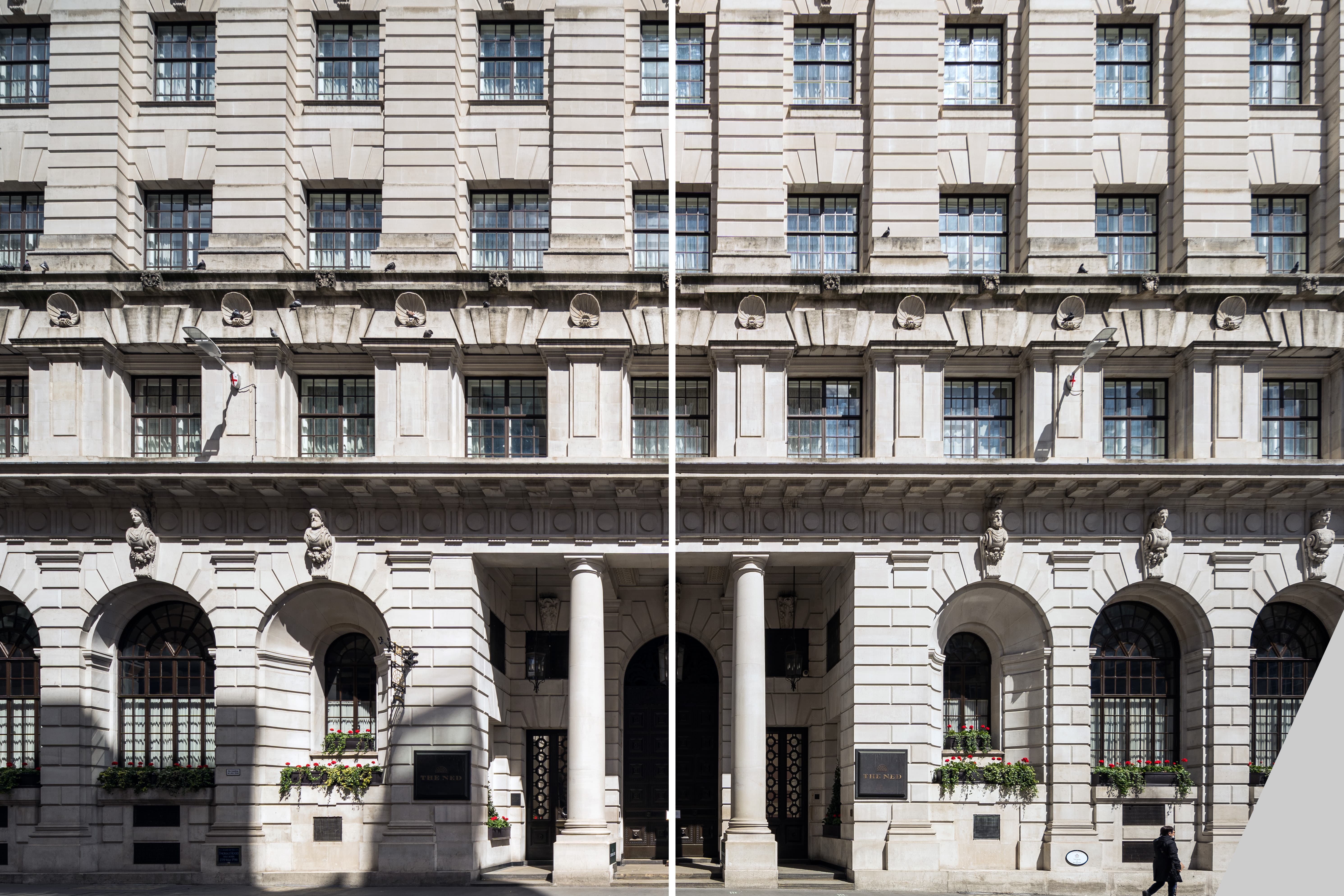
Left side: with lens shifted. Right side: With lens tilted, then perspective corrected in Photoshop. Using shift has given a significantly wider final field of view, compared correcting converging verticals in software.
In contrast, with a shift lens you can compose your images properly in-camera. You’ll still take advantage of all of your sensor pixels, and because you don’t have to crop away large areas of the image after processing, you’ll get a wider effective angle of view. So for demanding users, the benefits can be very real.
Laowa 15mm f/4.5 Shift: Features
Let’s take a look at what the Laowa 15mm f/4.5 has to offer. First and foremost, it’s an ultra-wideangle prime that provides 11mm of shift in any direction. This requires an image circle 65mm in diameter, rather than the usual 43mm for full frame, which means the lens covers an overall angle of view equivalent to 10mm. The Zero-D in its name promises minimal curvilinear distortion, which is essential for this type of lens.
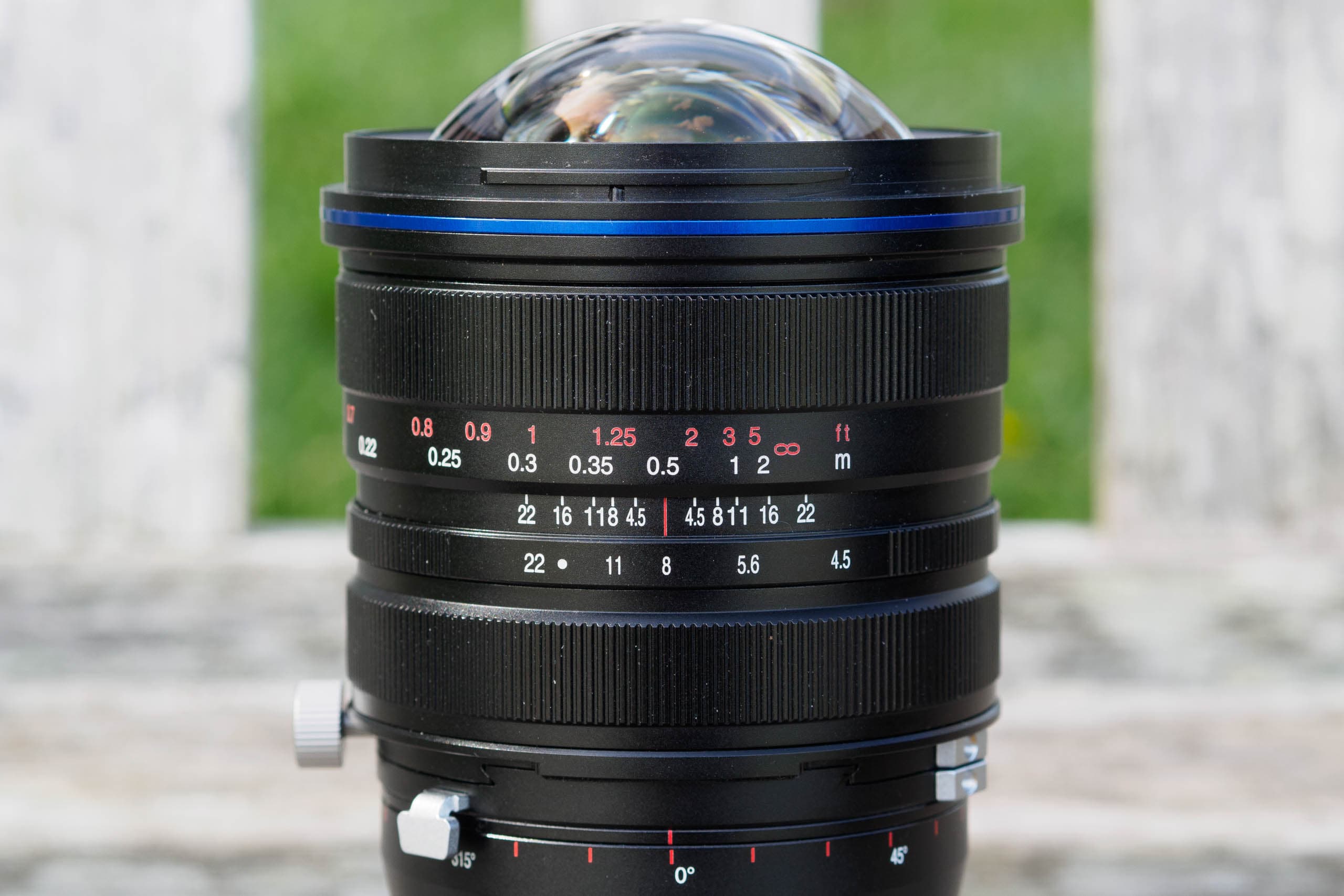
To achieve its huge angle of view, the lens has a striking domed front element. Both focusing and aperture setting are manual.
Optically Laowa has used an arrangement of 17 elements in 11 groups, headed up by a strikingly bulbous front element. Behind it, two aspheric elements and three extra-low dispersion (ED) glass elements are used to suppress distortion and lateral chromatic aberration. Apertures down to f/22 are provided by a five-bladed diaphragm, and the lens can focus as close as 20cm.
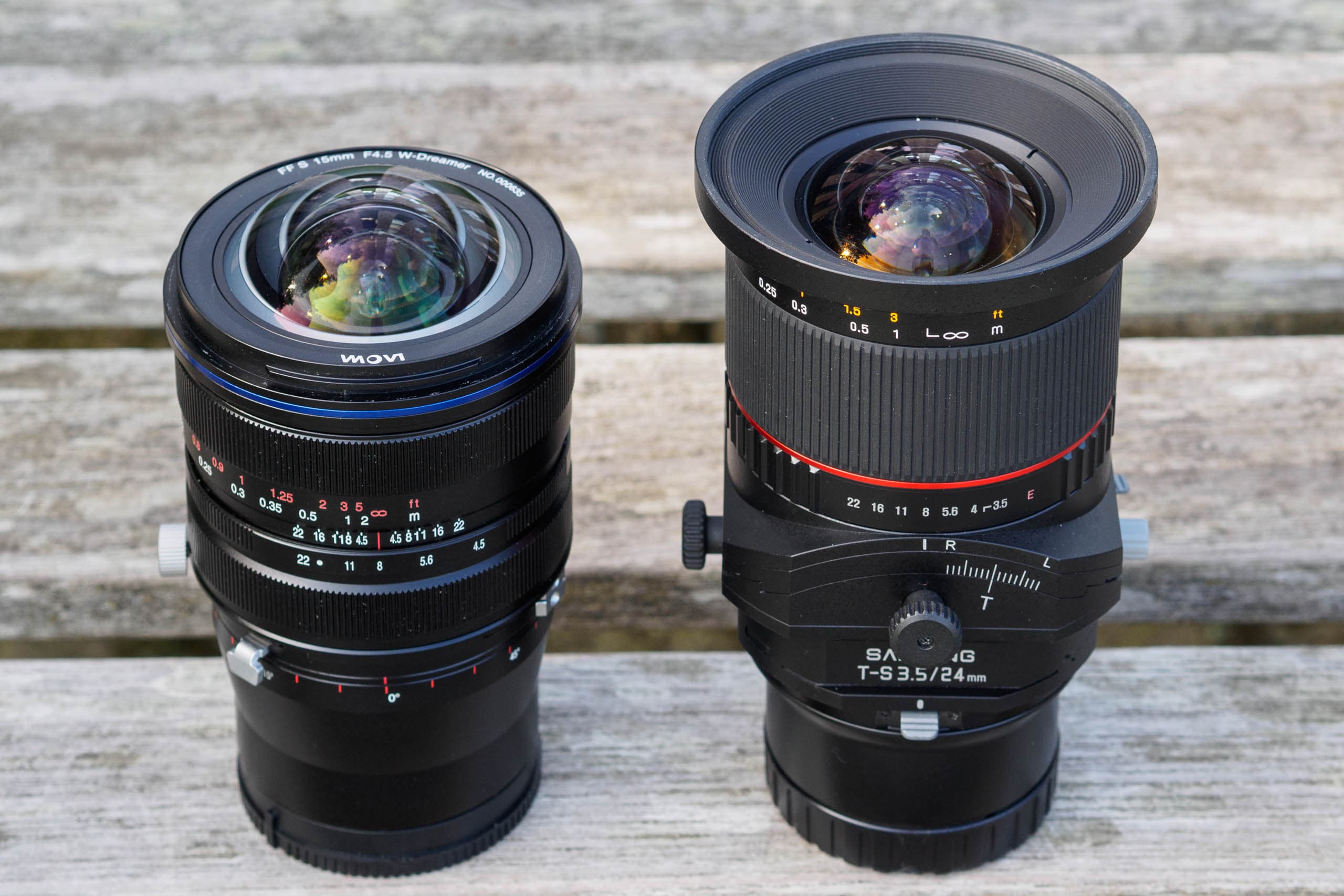
The lens is surprisingly small given its angle of view. Here it is compared to the Samyang T-S 24mm F3.5 ED AS UMC, both in Sony E mount
Both focusing and aperture operation are entirely manual, and operated using traditional rings around the lens barrel. There are no electronics for passing the aperture setting to the camera, so you won’t see this in the viewfinder or your images’ EXIF data. If you use a camera with in-body stabilisation, you’ll need to set the focal length manually.
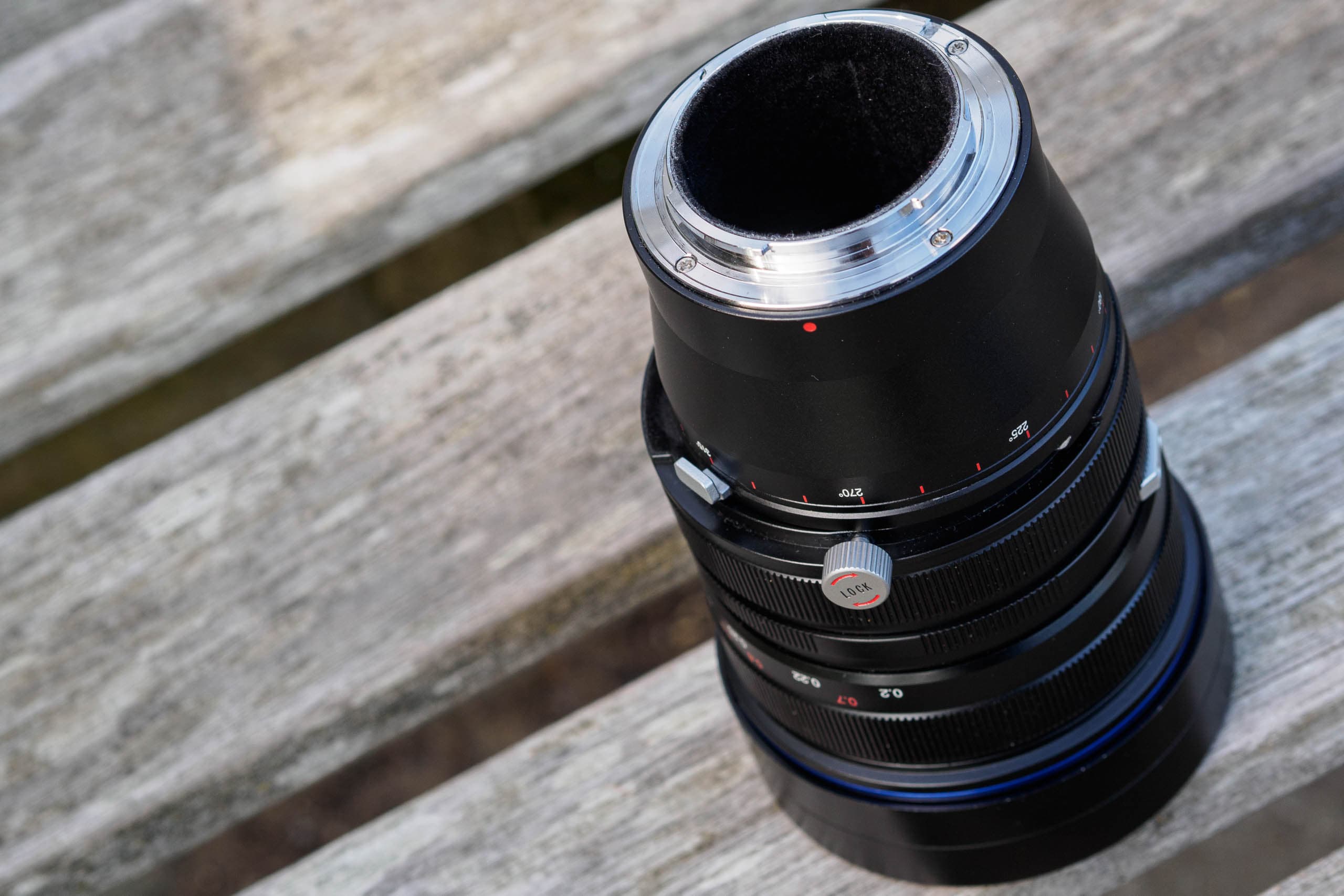
The lens has no electronic contacts for communicating with the camera. Versions for mirrorless cameras have a long extended mount section – this one is Sony E
With such a wide field of view, screw-in filters are never going to be an option. However Laowa offers a matched holder for 100mm-wide filters which costs £130. There’s also a £160 Lens Support that allows the lens to be fixed onto a tripod while the camera is moved behind it, which is useful for stitching multiple images at different shift positions to give an even wider view.
Build and Handling
The first thing you have to work out when using this lens is how to remove its front cap. That vulnerable dome of glass needs special protection, which comes in the form of an unusual bayonet-fit cylindrical cap. It’s good practice to keep this in place when you’re not shooting.
With a barrel that’s constructed entirely of metal, the quality of construction is excellent. At the front, the manual focus ring operates beautifully smoothly without a hint of backlash, while the aperture ring has shallow but firm detents at the full-stop settings. Behind this, the shift mechanism is operated via a third ring around the barrel, which makes for impressively smooth and precise adjustment.
A scale on the right side of the barrel indicates how much shift you’ve dialled in, while a screw on the left locks the lens at any position. On the upper left you’ll find a button that, when depressed, allows the shift movement to be rotated relative to the camera, with click-stops at 15-degree intervals. It’s very straightforward and intuitive to use.
Given its immense angle of view, the Laowa 15mm f/4.5 is surprisingly small. It’s specified as 103mm long and 597g in weight for DSLR mounts, which makes it substantially lighter than its Canon and Nikon counterparts. Mirrorless versions are necessarily a couple of centimetres longer and about 140g heavier, thanks to a robust extended mount section that’s felt-lined to minimise internal reflections. Inevitably, the mechanical complexity of its design means that the lens isn’t weather sealed.
What’s the lens like to use?
Shift lenses are infamously tricky to use with the optical viewfinders of SLRs. They wreak havoc with the metering, so you have to set the camera on a tripod, adjust the focus, manually set the exposure, and finally shift the lens to achieve your desired composition. Switching to live view fixes the metering and aids with focusing, but you’ll still need to use a tripod.
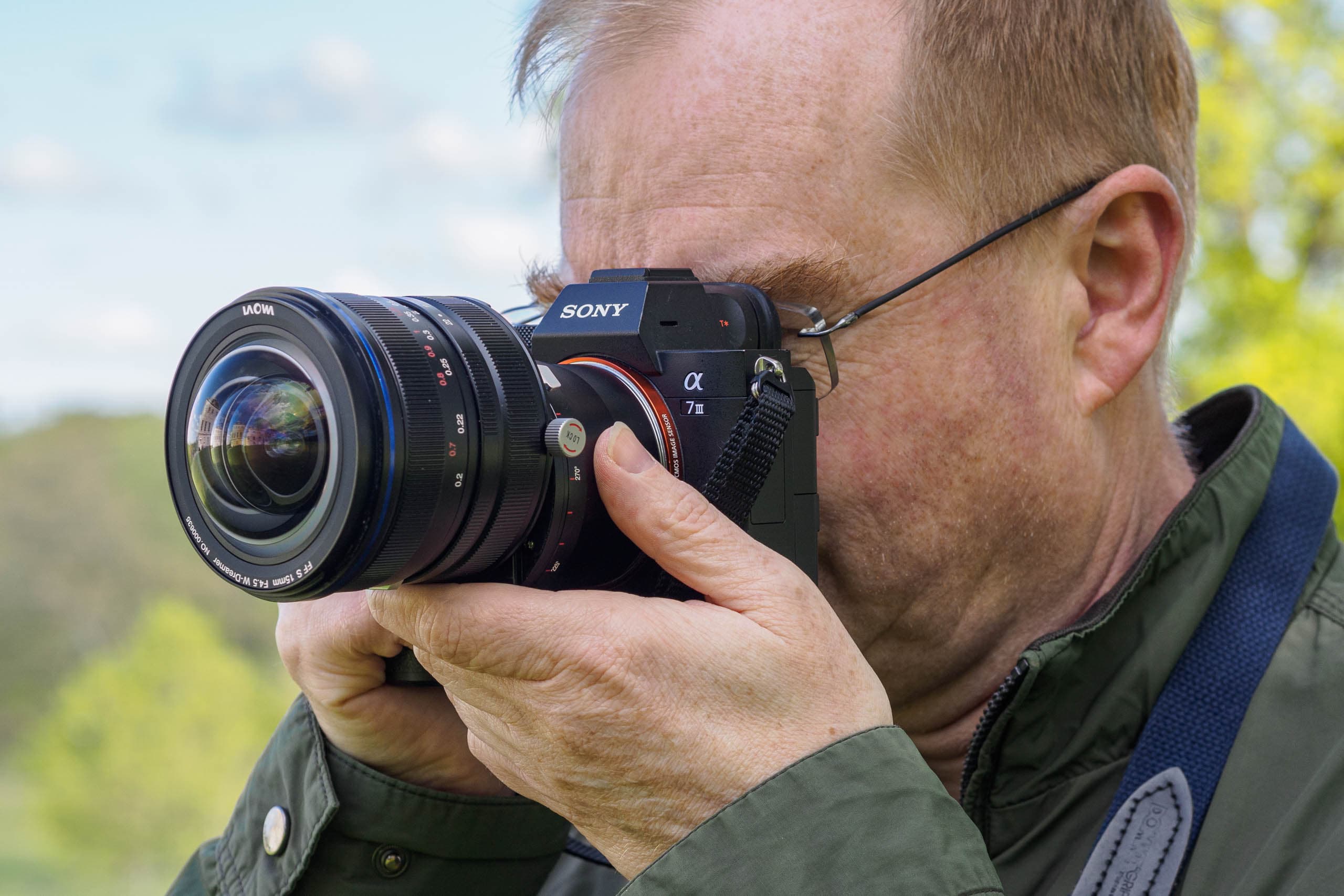
The lens is much easier to use with a mirrorless camera than a DSLR, as the metering isn’t thrown out by shifting the lens
However on mirrorless cameras it’s a different story, and with a bit of practice, shift lenses become very easy to use. I tested the E-mount version on the Sony Alpha 7 III and spent just as much time shooting hand-held as I did with the camera on a tripod. The trick is to use the camera’s electronic level display to keep everything straight, shift the lens then shoot.

I was able to capture the impressive facade of the Bank of England from across the street, which is impossible with almost any other lens. Sony Alpha7 III, 1/400 sec at f/11, ISO 100. Shot hand-held with 11mm vertical shift
You won’t get geometrically perfect results in-camera when shooting hand-held, but your files will probably only need minor tweaks in raw processing. Of course for critical work there’s a still lot to be said for using a tripod with a geared head for precise composition.
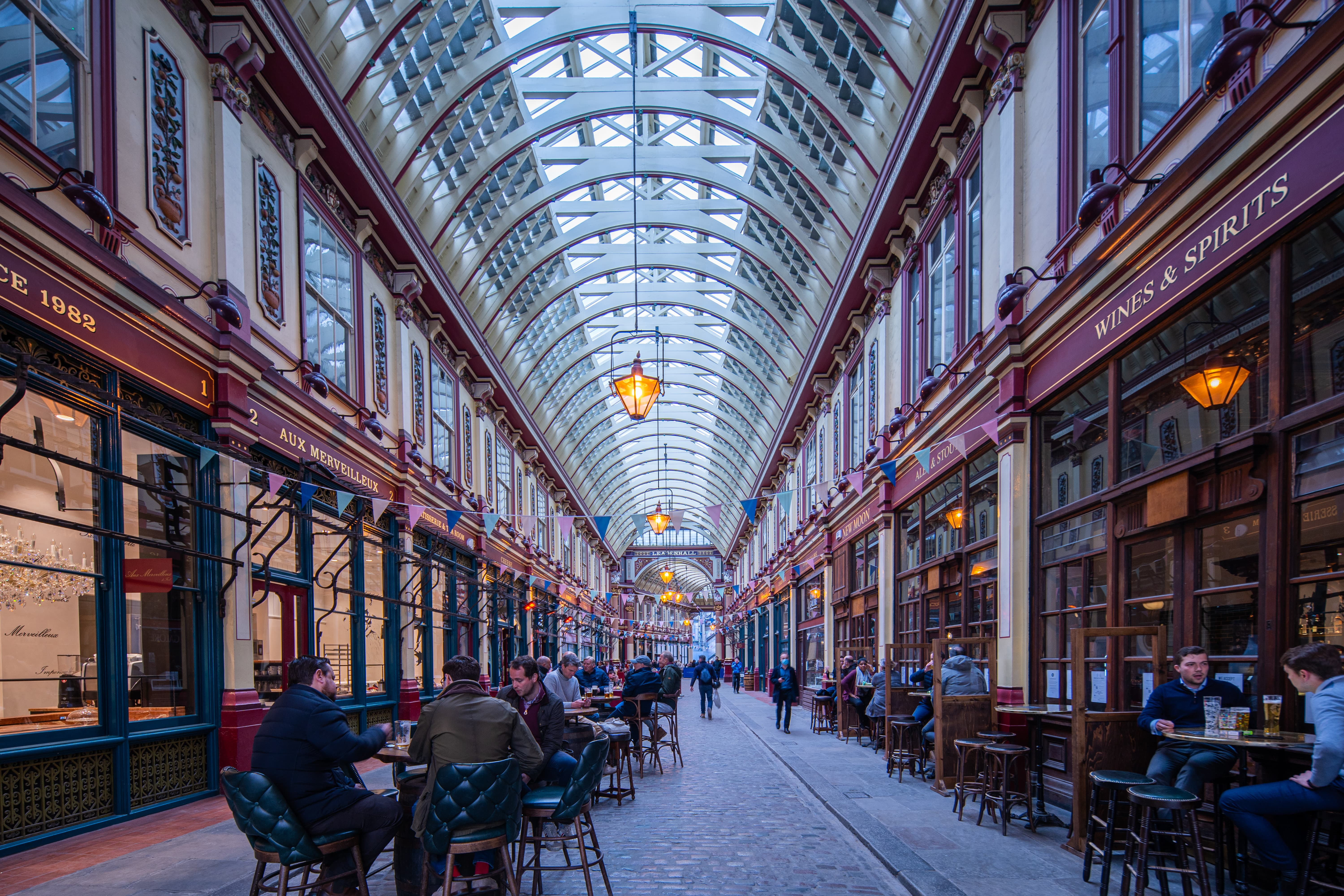
Its huge angle of view makes the Laowa 15mm uniquely suitable for interiors. Sony Alpha 7 III, 1/10sec at f/8, ISO 100, vertical shift
With its immense angle of view, the Laowa 15mm f/4.5 is a specialist tool even by the standards of shift lenses. It turns out to be ideal for shooting large buildings with flat facades where space is tight, or very tall buildings from relatively close viewpoints. But it’s not so great with more complex three-dimensional shapes such as churches, where you’re liable to end up with significant distortion of their proportions. Its biggest strength perhaps lies with interiors, with which it can deliver especially dramatic results.
Image Quality
Of course with its £1249 price tag, the Laowa 15mm f/4.5 can’t entirely rely on its unique capabilities to justify its existence; it also has to deliver the goods optically. Shift lenses are expected to provide high sharpness across their full image circle, along with minimal distortion and lateral chromatic aberration.
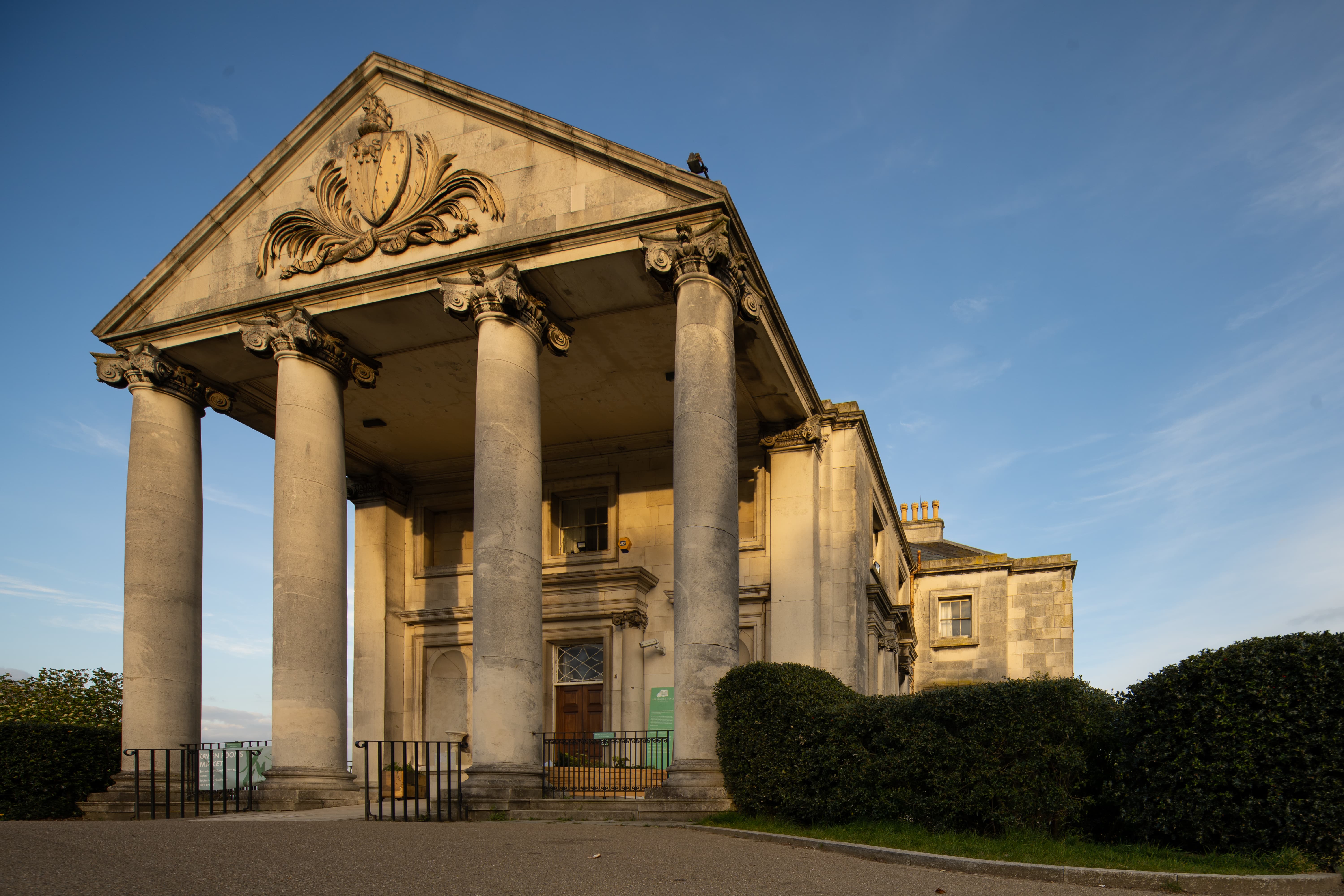
Here I combined leftwards and vertical shift, which reduced horizontal convergence. Sony Alpha 7 III, 1/60sec at f/11, ISO 100.
Let’s start with the good points. Firstly, the lens has impressively low distortion: at full vertical shift there’s some visible barrel-type bowing of straight lines across the top of the frame, but it’s not so pronounced that it’s likely to spoil your images. Some green and magenta fringing is visible due to lateral chromatic aberration, but it’s not excessive, which is important as it can’t easily be fixed using the usual one-click tools in Adobe Camera Raw.
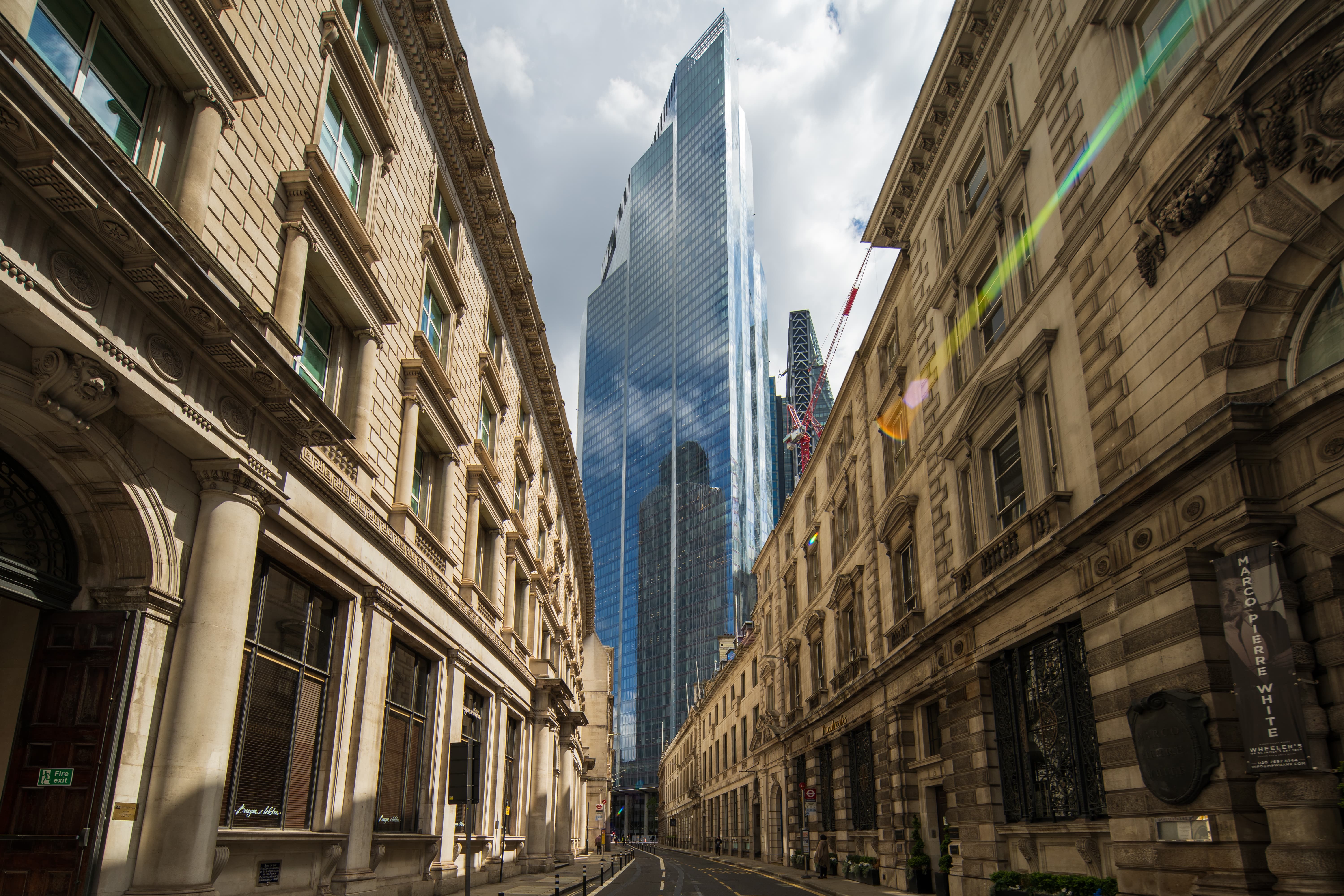
Flare streaks can occasionally be seen in sunny conditions. Here I under-corrected shift for a more dramatic result. Sony Alpha 7 III, 1/250sec at f/8, ISO 100.
Vignetting is quite pronounced at f/4.5, which results in ugly darkening across the top of the frame when the lens is shifted, but it clears up completely by f/11. The optics are also pretty resistant to flare, although occasionally you’ll see striking streaks of light if the sun shines directly onto the front element. In such situations you’re best advised to put the camera on a tripod and shield the lens using your hand or a piece of card.
Where my review sample fell over slightly came with regards to sharpness, although not in the usual way. Rather than soft edges or corners, it exhibited noticeable asymmetry when examining 24MP files from the Sony A7 III at 100% onscreen. The left-hand edge of the image was impressively sharp, especially when stopped down to f/8 or smaller, but the right edge was noticeably blurred, and this could only really be overcome by stopping down to f/16. With the lens fully shifted vertically, the top third of the image never quite got critically sharp even at the smallest apertures, but that’s not entirely unexpected.
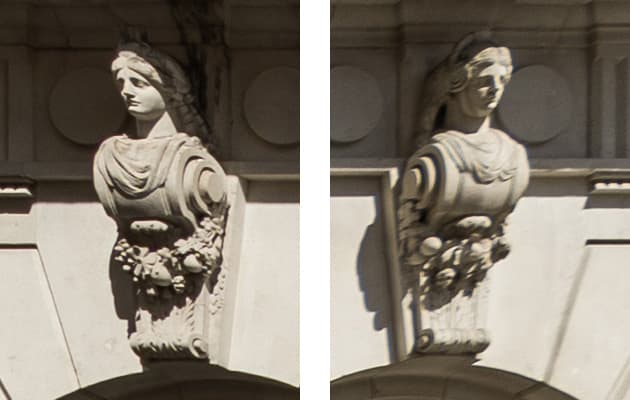
These 100% crops, taken from the example at the top of the page, show my review sample’s asymmetric left- and right-side sharpness at f/8
The lens’s asymmetry could indicate an alignment problem during manufacturing; after all, this is an extraordinarily ambitious design. But then again, my review sample had been flown from China to the UK, so equally it could be a result of careless handling in transit. My previous experience of Laowa lenses makes me think that a properly-adjusted example of the lens should give more symmetric sharpness.
Laowa 15mm f/4.5 Zero-D Shift: Verdict
In many respects, it’s difficult to rate a lens like the Laowa 15mm f/4.5 Zero-D Shift. Its unique combination of an ultra-wide angle view and shift movement means that its capable of delivering images that no other lens can capture in quite the same way. If that’s something you can exploit either commercially or aesthetically, that might be all you need to justify its price tag. There really is nothing else like it, aside perhaps from the Canon TS-E 17mm f/4L which costs £1000 more. Indeed the fact that this lens exists at all is pretty extraordinary, particularly when you consider that it comes from a company that’s only eight years old.
Of course the asymmetric sharpness of my review sample has to raise some concerns, although I doubt all copies of the lens will look the same in this regard. I’d recommend buyers check the lens thoroughly to ensure it gives acceptable results for their needs, but that’s always good practise anyway.

You simply couldn’t get this shot with any other lens. However, the ultra-wide view has exaggerated the shape of the church’s tower and spire. Sony Alpha 7 III, 1/60sec at f/16, ISO 100 11mm vertical shift
Obviously this is a niche lens, and with its fully manual operation and extreme field of view, really not one for the faint-hearted. It certainly takes more knowledge, technique and practise than usual to get the best out of it. But for architectural photographers who know exactly what they’re doing, it offers unique creative potential.

Laowa 15mm f/4.5 Zero-D Shift: Full Specifications


